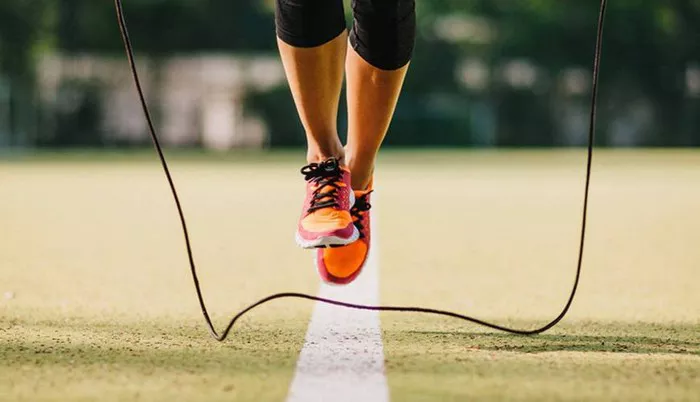Jumping rope is a popular form of exercise that is often used for cardiovascular conditioning. It is a low-impact, high-intensity exercise that can provide a range of benefits for cardiovascular health, including improved endurance, increased calorie burn, and improved coordination. In this article, we will explore whether jumping rope can increase running endurance and what makes it an effective form of conditioning for runners.
What is Jumping Rope?
Jumping rope, also known as skipping, is a form of exercise that involves jumping over a rope that is swung over the head and under the feet. It is a low-impact exercise that can be performed anywhere with a jump rope and a flat surface.
How Does Jumping Rope Improve Endurance?
Jumping rope can improve endurance in several ways:
High-intensity: Jumping rope is a high-intensity exercise that can elevate heart rate and breathing rate quickly, making it an effective form of cardiovascular conditioning.
Low-impact: Jumping rope is a low-impact exercise that is easy on the joints, making it a good choice for individuals with joint pain or injuries.
Full-body workout: Jumping rope involves the use of multiple muscle groups, including the legs, core, and upper body, making it a full-body workout.
Improves coordination: Jumping rope requires coordination and timing, which can improve overall coordination and balance.
By improving cardiovascular fitness, increasing muscle endurance, and improving overall coordination, jumping rope can help to improve running endurance.
How Can Jumping Rope Benefit Runners?
Jumping rope can provide a range of benefits for runners, including:
Improved cardiovascular fitness: Jumping rope can improve cardiovascular fitness, which can help runners to run longer and faster.
Increased muscle endurance: Jumping rope can increase muscle endurance in the legs, which can help runners to maintain a steady pace for longer periods of time.
Improved coordination: Jumping rope requires coordination and timing, which can improve overall coordination and balance, helping runners to maintain proper form and avoid injury.
Low-impact: Jumping rope is a low-impact exercise that is easy on the joints, making it a good choice for runners who want to avoid high-impact exercises that can cause injury.
Research on the Effects of Jumping Rope on Running Endurance
Several studies have investigated the effects of jumping rope on running endurance. A study published in the Journal of Strength and Conditioning Research found that six weeks of jump rope training improved running economy and maximal oxygen uptake in male distance runners. Another study published in the International Journal of Sports Medicine found that six weeks of jump rope training improved running economy and maximal oxygen uptake in female distance runners.
A study published in the Journal of Sports Medicine and Physical Fitness found that jump rope training improved running performance in male soccer players. The study found that jump rope training improved running speed, agility, and endurance in the soccer players.
How to Incorporate Jumping Rope into Your Running Routine?
If you are interested in incorporating jumping rope into your running routine, here are some tips to get started:
Start slowly: If you are new to jumping rope, start with short intervals and gradually increase the duration and intensity over time.
Warm up: Before jumping rope, warm up with some light cardio and dynamic stretches to prevent injury.
Mix it up: Mix jumping rope with other forms of cardio, such as running or cycling, to prevent boredom and improve overall fitness.
Challenge yourself: Try different jumping rope techniques, such as double unders or crossovers, to challenge yourself and improve coordination.
Use it as a warm-up or cool-down: Jumping rope can be used as a warm-up or cool-down exercise before or after a run to improve cardiovascular fitness and reduce the risk of injury.
Conclusion
Jumping rope is a low-impact, high-intensity exercise that can provide a range of benefits for cardiovascular health, including improved endurance, increased calorie burn, and improved coordination. By improving cardiovascular fitness, increasing muscle endurance, and improving overall coordination, jumping rope can help to improve running endurance. Research has shown that jump rope training can improve running economy, maximal oxygen uptake, running speed, agility, and endurance in distance runners and soccer players. If you are interested in incorporating jumping rope into your running routine, start slowly and gradually increase the duration and intensity over time, and mix it up with other forms of cardio to prevent boredom and improve overall fitness.
[inline_related_posts title=”You Might Be Interested In” title_align=”left” style=”list” number=”6″ align=”none” ids=”5371,5344,5341″ by=”categories” orderby=”rand” order=”DESC” hide_thumb=”no” thumb_right=”no” views=”no” date=”yes” grid_columns=”2″ post_type=”” tax=””]































